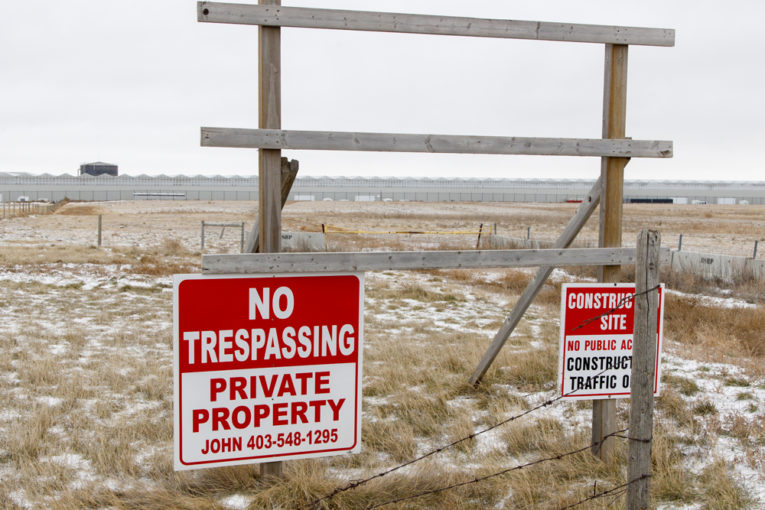
The Financial Post takes a look at 11 people and companies we’ll be watching closely in the new year.
Aurora Cannabis Inc.’s facility in Medicine Hat, Alta., is so large that it appears to stretch for miles on end, with a long row of bright white greenhouses dwarfing every other structure in the town’s industrial park.
But on a snowy Wednesday morning in late November, there’s only a semblance of activity around the facility. Tractors roll up along the main entranceway to the greenhouse in an attempt to shovel snow, while at least four people are perched on elevated cranes watching the tractors work.
Just months earlier, the construction of Aurora Sun — which the company pegged as the world’s largest greenhouse facility by square footage — was happening at a frenetic pace as workers raced around the clock to meet a self-imposed deadline of being fully operational by the end of 2019.
“They were going full steam. They were paying overtime, working 24 hours, pouring concrete, doing a lot of things,” said Medicine Hat Mayor Ted Clugston. “Then they halted that push.”
Aurora in mid-November, just after posting one of its weakest financial quarters ever, abruptly announced it was halting construction in order to conserve $110 million of cash. Its cannabis revenues during the first quarter declined by 25 per cent and its losses widened.
They were going full steam. They were paying overtime, working 24 hours, pouring concrete, doing a lot of things. Then they halted that push
Medicine Hat Mayor Ted Clugston
The delay was a prudent step to rein in expenses, given the slow sales and the four existing cannabis facilities across the country that Aurora already owns and operates, including a mammoth 800,000-square-foot plant in Edmonton.
But for Medicine Hat, a gas-dependent town where job losses soared and city revenues plummeted in the wake of low oil and gas prices, the prospect that the promised 650 new jobs might not materialize in the near future was crushing.
“Imagine if someone came to downtown Calgary and said I’m hiring 20,000 people. That’s how significant Aurora is to Medicine Hat,” Clugston said. “I had full confidence in them before this. It has been shaken a little bit.”
Clugston for more than a year had been championing Aurora Sun and the potential it had to reinvigorate his town’s economy, but now there are worries the facility will not realize its full potential given the oversupply conditions that have affected the Canadian market.
Aurora Sun, a sprawling 1.6-million-square foot facility — the size of 21 football fields — was announced in April 2018 to much fanfare from the company, industry participants and investors. Medicine Hat was chosen as the location because it’s the “sunniest city in Canada, with more than 2,500 hours of sunshine per year,” said a statement put out by the company last April.
Back in those pre-legalization times when cannabis investors were giddy with optimism and heralding the industry as the next gold rush, Aurora Sun was labelled a sure-fire investment opportunity.
“The global market is experiencing a massive excess of demand over supply for legal, regulated medical cannabis, with extremely rapid growth,” Aurora said in that same statement announcing the Sun project. “This situation is expected to continue for a number of years, and only a small number of producers around the world have the experience in regulated cultivation, the production capacity, and the access to capital to successfully exploit this opportunity.”
The company wasn’t the only one bubbling with enthusiasm.
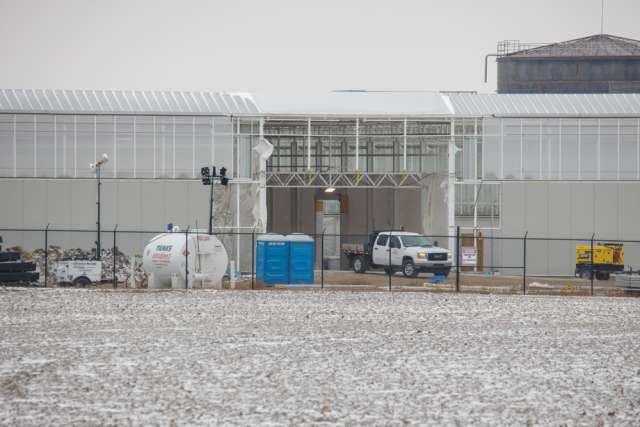
“I don’t know if anyone could have predicted the size of the industry. I was never really interested in it, other than I saw the opportunity for Medicine Hat. I wanted to capitalize on it,” Clugston said.
But it didn’t take long for the euphoria to wear off. By summer, just 10 months after legalization, problems started to crop up for the industry as a whole. There were scandals, regulatory breaches and executive shakeups, and, most crucially, sluggish earnings due to uncompetitive pricing, mediocre product quality and stagnant demand, particularly in Ontario where just 24 retail stores have been operating.
Sitting on a significant net debt and a hefty amount of inventory from other facilities, Aurora was forced to make some tough decisions to reduce costs.
Cam Battley, chief corporate officer, characterized the decision to put Aurora Sun on the backburner as a “flexible and intelligent” manoeuvre to conserve expenses.
He noted that construction is still ongoing, albeit at a much slower pace, and that six of the planned 36 grow rooms, equivalent to more than 200,000 square feet of the facility, will become operational in early 2020. It is unclear how many jobs that will create for the time being.
“We’re able to start production before all the rooms are completed. We get approval for all of the rooms, and production begins,” Battley said. “Of course, it remains our intention to complete the entire facility.”
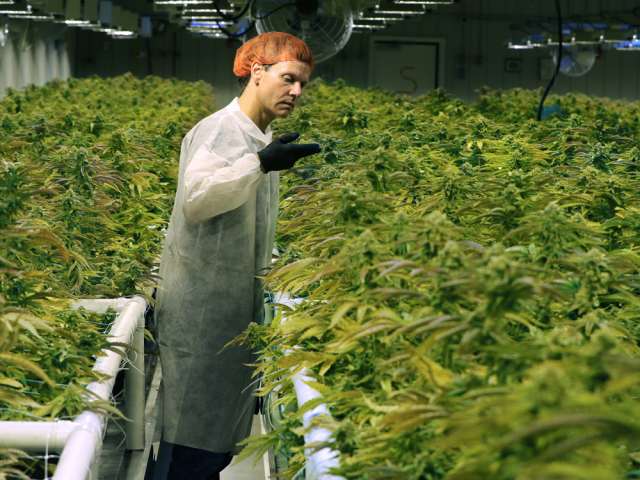
But doing so, the company said, is contingent upon two factors: an increase in the number of retail stores in Ontario, and the success of cannabis 2.0, which will put a slew of new products such as vape pens, edibles and beverages on the market, presumably increasing overall demand.
“During the course of 2020, we will have a clearer picture of what the timeline will be,” Battley said.
Yet some industry analysts are forecasting that Aurora Sun might not be fully operational and that cannabis growing will remain confined to just a sixth of its overall space for the next three to four years, a timeline that creates a major conundrum for Medicine Hat, which is heavily relying on the jobs that Aurora Sun might bring.
“In my view, the deterioration in cannabis industry conditions will make it unlikely the whole thing goes into production in three to four years,” said Chris Damas, a long-time cannabis industry analyst and author of The BCMI report. “If you step back, Aurora Sun at 230,000 kilograms a year compared to last-quarter cannabis sales of 12,463 kilograms meant that they were building capacity of 4.6 times their current sales rate, on top of the existing capacity of about 150,000 kilograms per year.”
In short, he said, “it’s a really crazy big project compared to existing sales.”
Damas has long argued that the cannabis industry, with the amount of greenhouse space that was built or funded to be built in the lead-up to legalization, would end up with a massive oversupply issue in the domestic market, even if Ontario ramps up its number of stores.
It remains our intention to complete the entire facility
Cam Battley, Aurora’s chief corporate officer
Health Canada numbers have so far shown that cannabis inventory is far outstripping sales figures by a remarkable margin, causing a decline in per-gram prices.
“There are a dozen million-plus-square-feet cannabis greenhouses built, or in the final stages of construction and awaiting licensing,” Damas said in a note to clients back in November. “Until these greenhouses are curtained partially or mothballed completely, there can be no improvement in the short to medium term supply/demand picture for cannabis.”
CIBC’s cannabis analyst John Zamparo shares a similar view.
“Aurora has more production capacity than it needs, and that’s true of not just them but several other producers. They had intended to build a footprint that would supply a mature market,” he said in a recent interview on the prospect of Aurora Sun ever operating at full capacity.
Indeed, Aurora is not the only cannabis company recently forced to curtail some major projects.
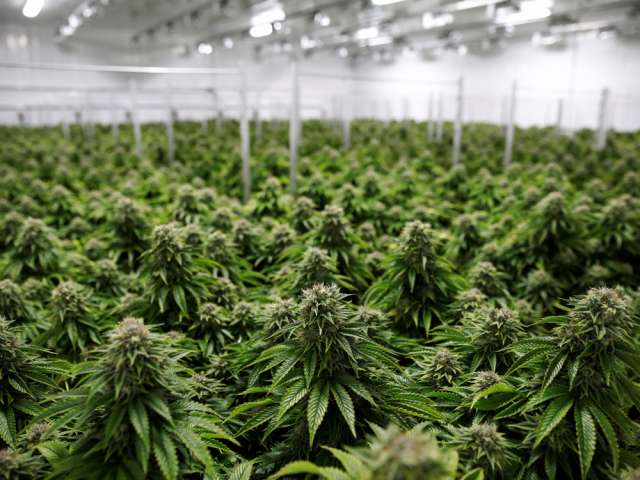
Quebec producer Hexo Corp. in October shut down a 400,000-square-foot greenhouse in Beamsville, Ont., calling the move a “rightsizing” of operations and putting hundreds of employees out of work. New Brunswick cannabis producer Organigram Inc., which also had declining revenues and burgeoning losses in fiscal 2019, in November announced it had decided to delay final construction on a phase of its Moncton, N.B., campus until the retail situation improves in Ontario.
“There are just far too many greenhouses currently and planned than is needed to supply the Canadian markets and European markets in 2020 … and maybe even 2021,” Zamparo said. “Maybe Aurora Sun will get completely built. But capacity among the top 10 producers is already more than enough to supply the existing market.”
But Mayor Clugston continues to remain hopeful. After the announcement about slowing down work at Sun, he had a closed-door meeting with Aurora executives, including company chief executive Terry Booth, who reassured him the project would go as planned. They did not, however, give the mayor a clear timeline.
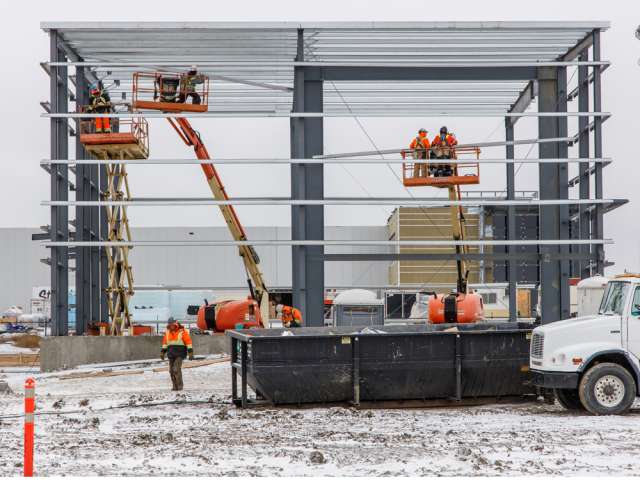
“I think well … it’s not like they are trying to be vague, but I think they are a little nervous about over-promising because of what has happened in the cannabis industry,” he said. “They will be planting in the spring here, and then hopefully they’ll want to add. So maybe in a year? A year and a half? Yeah, that’s maybe when they might be at full production.”
But he can’t stop the worry from colouring his tone.
Eric Springman, a realtor in Medicine Hat who has watched his town go through numerous booms and busts, is more optimistic.
“I was disappointed. Definitely. Of course, we would like 600 jobs. But we would also like 200 jobs,” he said. “I’m disappointed, but I’m also happy that at least for now, some part of the plant might be operating.”
Financial Post
• Email: [email protected] | Twitter: VanmalaS
You can read more of the news on source
